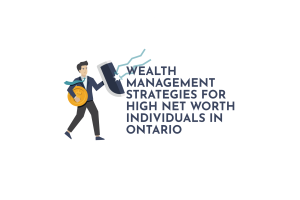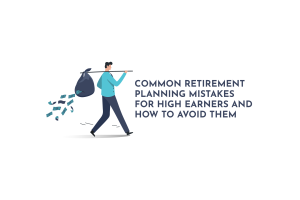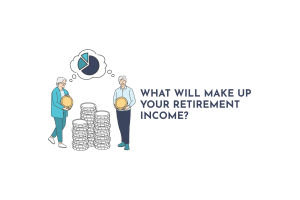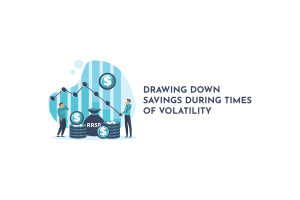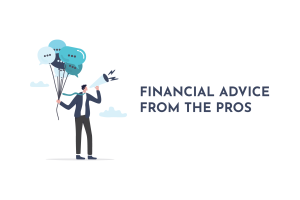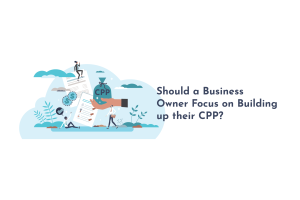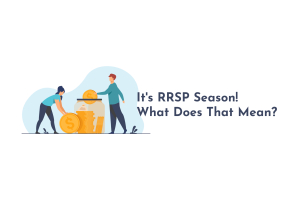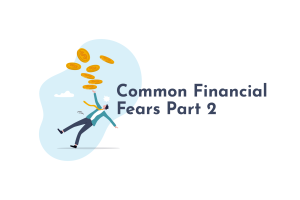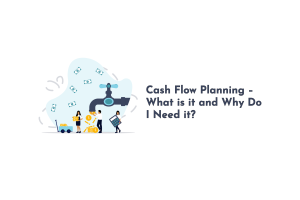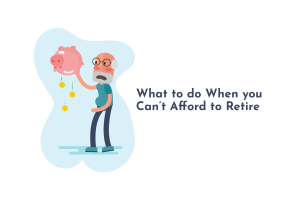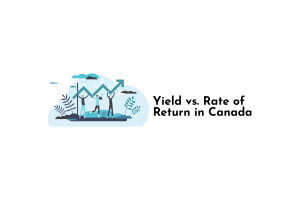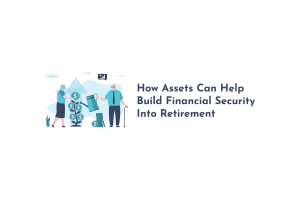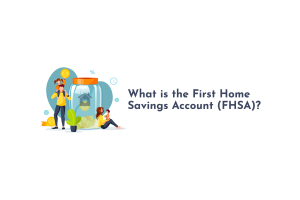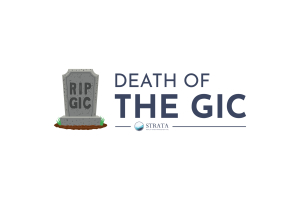The GIC – Guaranteed Investment Certificate – in Canada has long been viewed as a sure thing for increasing revenue. GICs add interest to an amount paid by the investor after a predetermined amount of time. It is essentially a loan that the investor makes to the bank that is repaid with a certain percentage in interest at the end of the prescribed time.
The problem is that the inflation level has now outpaced the interest level, meaning that the GICs may no longer be such a good investment.
In This Article:
- What are GICs?
- What kind of GICs exist?
- Are GICs taxed?
- What is the usual time frame for a GIC?
- What are the risks of investing in a GIC?
- How do inflation and interest rates affect each other?
- If GICs are not keeping up with inflation, what is a better option?
- How do I manage my investments?
What Are GICs?
Guaranteed Investment Certificates (GICs) are a way of investing that provides a guaranteed return on one’s investment. The investor pays a certain amount and receives that amount plus the guaranteed interest at the end of the agreed term, referred to as the maturity date
To guarantee the return, the CDIC insures most GICs. Even if the issuing bank or institution runs into trouble or goes out of business, the investor still receives the principal in return. The amount insured is limited to $100,000 and 5 years, meaning that if an investor’s GIC is over $100,000 or maturing after five years, it may not be covered
It is similar to an interest-bearing savings account, except that it is literally a loan to the bank or other financial institution that the investor receives back with interest. Investing in a GIC has no fees
What Kinds of GICs Exist?
- Fixed-rate
In a fixed-rate GIC, the provider pays the interest after a specific period. At the end of that term, the investor receives the principal plus the agreed interest based on the fixed rate. For a GIC for one year at 3% interest and $1000 principal, the investor will receive $1030 at the end of the year
- Variable-rate
The prime rate determines the interest rate, so the rate changes as the prime rate changes. The fluctuations may result in more or less interest than expected, but the return will still be principal plus interest. With most variable rate GICs, the provider calculates the interest according to the prime rate, and the rate changes the day after the prime rate change.
Thirty days after the initial investment, the GIC begins to accrue interest up to redemption. Investors who do not desire to cash out at the end of the term can reinvest with the same parameters
- Equity-linked
The stock market or a group of stocks determines the rate of return. If the value increases, so does the return. The investor may see a large return if the market climbs. The issuer generally limits decreases in the rate. The return value is not a guaranteed amount, but the investors will receive at least the principal amount of the investment
- Rate rising or step-up
The longer an investor holds the GIC, the higher the rate. For example, some go up by 1% each successive year. Most are three-year investments that average 2% per year, with the third year offering the highest rate
Step-up GICs can be cashed out at any anniversary date for the listed interest rate for that year or those years, but if an investor cashes out before the third year, the return will be lower than if the GIC is allowed to mature to the end of the three years
- Foreign currency
Earn interest in a foreign currency to maximize interest returns based on exchange rates. Investors who earn money from foreign countries often use this method to increase their gains. However, the interest rate is usually lower than other GICs, and the CDIC does not insure this type. The exchange rate fluctuations will affect the overall return, so foreign currency GICs carry some risk
- Simple interest
One percentage determines the return at the end of the term, no matter how long the time lasts. If the principal amount is $1000, and the interest rate is 3%, the investor will receive $1030 at the end of the time
- Compound interest
The interest is added into the principal every so often. The interest may compound monthly, quarterly, twice yearly, or annually. Subsequent interest includes the entire principal plus interest amount. $1000 compounded monthly at 3% results in a return of $1425 after a year
- Cashable or redeemable
The investor can cash out a cashable GIC at any time, without a penalty. However, the redemption prorates the interest, and the investor will not receive the entire expected amount because the GIC did not reach maturity. The interest rate is calculated to the date of the redemption
- Non-redeemable
The investor is not allowed to cash out until the end of the agreed term or otherwise must pay a penalty. The penalty will probably negate any earned interest and may also eat into the original investment. However, the interest offered on non-redeemable GICs is often higher than that on cashable GICs, so those investors who can leave the money until the maturity date receive a slightly greater reward
Are GICs Taxed?
The government does not tax the principal of a GIC, because it was taxed as income already.
The interest received from a GIC is taxable unless the investor holds it inside a retirement account such as a Registered Retirement Savings Plan (RRSP), a Tax-Free Savings Account (TFSA), or a Registered Education Savings Plan (RESP).
The interest is taxed when withdrawing it from an RRSP, as usual. It is not taxed at all if it was in a TFSA. Taxes with an RESP are complicated
What Is the Usual Timeframe for a GIC?
The term is variable and may be as little as thirty days and up to ten years. Some might be three months or three years. Just about every time in between the longest and shortest times is possible. A term less than a year is likely to offer a lower interest rate than a savings account that offers high interest, while one longer than five years is not insured by the CDIC
Investors must be as sure as humanly possible that the invested money will not be needed while waiting for the GIC to mature, especially when it is a non-redeemable GIC. The investment is potentially moot if the money is needed before the GIC matures
What Are the Risks of Investing in a GIC?
- Investors who desire to invest more than $100,000 must find multiple institutions or forfeit anything over that amount if the issuing institution runs into difficulty because the CDIC only insures up to $100,000 per institution per person
- It is not easy to recover the invested funds quickly in an emergency. With non-refundable GICs, it may be impossible
- Inflation is the highest risk, especially when inflation jumps suddenly. When the inflation rate outpaces the interest rate of a long-term GIC, the resulting return may have less buying power than the initial investment. For instance, in May 2020, interest rates were 0.25% as compared to the inflation rate of 2%, and in the spring of 2021, inflation rates were between 3.1% and 3.6% while interest rates were only 2.5%.
- When an investor locks up a fixed-rate long-term GIC and the interest rates increase, the fixed-rate results in a loss of potential income because that money cannot be reinvested at a higher rate
How Do Inflation and Interest Rates Affect Each Other?
Inflation (the increase in prices of goods and services) and interest rates (the amount a lender charges a borrower) have a unique relationship. While the interest rate is based on a rate set by the government (sometimes known as the prime rate), it relates to the rise and fall of inflation
Low interest rates encourage economic growth, resulting in increased inflation. High interest rates slow the economy, causing a decrease in inflation. The government adjusts the prime rate according to the financial conditions of the country
Safer Alternatives to GICs
An investor needs to consider the purpose of investment to determine the best alternate option. Some options are fairly equal to GICs in both risk and reward, while others pose a significantly higher risk but also offer a potentially much higher reward, as well
- If the investor’s goal is to secure retirement, a fund such as the Registered Retirement Income Fund (RRIF) prevents tax requirements until withdrawal. The fund does have a minimum amount that must be paid out every year beginning in the year following the origin of the fund
- Savings bonds and deposit notes are similar to GICs in both risk and reward. They offer a similar percentage interest rate. The main difference is the ease of cashing out the bonds or notes when desired, as they are always cashable
- The stock market is one investment option that offers potentially great returns but at a much higher risk. Its tendency to volatility means that it could go either way. However, investing in stocks will also net the investor dividends, which in themselves tend to be higher than the returns from GICs. For instance, Canada’s average inflation rate in November 2021 was 4.7%, while the best stocks in that month increased 6.4
- Precious metals are another option, especially gold. The price of gold has increased steadily over the years, making it something that can add long-term value to an investor’s portfolio. The annual return average from 2000 to 2020 was 9.7% making it one of the highest returns available in a nearly certain investment
- Cryptocurrencies are a potential investment that carry some risk but can give amazing returns, as those who invested in Bitcoin have found. Cryptocurrencies are digital fiat currencies that can be bought and sold and used to purchase goods and services. It is unique because of its blockchain technology, which keeps it from being regulated like national currencies as well as from being hacked
- Putting the money into an interest-bearing savings account allows the funds to still be available when needed, but also accrues interest. Any interest is better than no interest and provides an increase in funds. Since it is not locked away, the increase is a real increase because it is right now instead of sometime in the post-inflation future.
Real Estate
Real estate has always been an investment that increases in value over time. Purchasing property and holding it for several years will nearly always result in a significant increase in value. Like long-term GICs, this is not an investment that can be quickly liquidated, but it is an investment that is quite sure to offer a reasonable return on the investment
Real estate that is purchased to be used as a rental property earns income monthly as well as gaining equity over time and increasing in resale value. Properly managed property can often be sold after several years for enough money to ensure a comfortable retirement. Rental property can be either residential or commercial. Commercial properties, while uncommon, may generate more income.
Annuities
Annuities are another investment option. They provide an income that is regular and guaranteed. An annuity is purchased through a company such as a life insurance company. Payments are then made back to the investor beginning at a chosen date which can be immediately or in the future
Annuity payments – which can be monthly, quarterly, biannually, or yearly, include interest, a part of the initial investment, and a portion from deceased purchasers who did not receive the entire amount of their investment before their decease. Some may choose to have the difference between the received and the paid amounts given to a beneficiary
Annuity payments are guaranteed until the holder’s death, even if the amount paid has been exceeded. A holder who purchased a $100,000 annuity to pay $500 monthly will reach the $100,000 mark at the age of 82. However, payments will continue until the holder’s death. If the holder reaches 90 years old, the total received amount will have been about $150,000
How Do I Manage My Investments?
Managing investments can take time. Each individual can manage investments alone, keeping track of where the money is being invested and how much return is resulting. Software is available to aid in tracking, or a simple spreadsheet may be sufficient for some people—but an investment of time, as well as money, is required
It is much easier for investors to allow an experienced finance company such as Strata Wealth to manage their investments instead. Strata Wealth has conveniently located offices such as in Gravenhurst, Muskoka, which is in central Ontario, Canada. Four other offices in GTA, Barrie, Victoria Harbour, and Abbotsford, BC, are also available.
Conclusion
GICs have long been a safe and reliable investment option in Canada, but in recent years, the inflation numbers have resulted in GICs becoming a less profitable investment. Investors who desire a significant return on a long-term investment may want to consider an alternative such as stocks, annuities, or real estate
Canadian investors who are unsure of the best venture option for individual requirements are wise to discuss their options with a financial advisor such as Strata Wealth before finalizing their investment portfolio.


